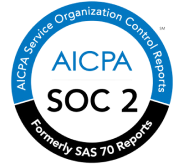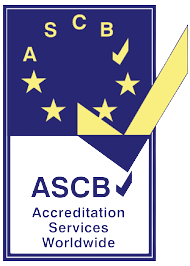Table of Content
Introduction
One of the core foundations of corporate social responsibility for a growing organisation is to create a positive retention ripple effect. That is highly possible when HR leaders are conscious of whom to hire, whom to train and how to implement such training sessions.
That’s just the beginning of the entire scenario, though. HR leaders need to act as catalysts for change management in the organisation. They work closely with the reporting and requisition managers to understand what type of people to hire and retain.
Once they invest in certain strategies, they are able to provide positive experiences. These experiences matter the most in the long run from an employee’s perspective to create ripples for lasting impact.
If you’re one such HR looking to create a ripple effect and impact up your talent management and development game this year, feel free to read ahead.
Want to skip the post?

What is the Retention Ripple Effect?
Employees are keen observers of how their management and C-suite leaders act in times of crisis the most. It also includes how HR leaders interact and react.
So, when these leaders are able to create positive workplace experiences, while retaining the top talent, it gives out an unsaid message to the rest.
That message, once observed and received by the rest of the lot in the organisation, creates a ripple effect. This domino impact can be taken in a serious or light manner. It depends on where the employee is coming from.
There could be multiple scenarios when such retention ripple effects are in motion. This could take a course at either corner.
For instance, if a seemingly high-performer quits or is let go due to unclear reasons, the rest of the staff becomes insecure.
However, those who are really committed to the growth of the company as well as their own will stick around and test the waters. They will majorly have good faith in the leadership of the firm.
In the most crucial times, they will not hesitate to reach out to HR through an intranet or the support desk.
However, at the same time, management can make sure to keep things transparent for at least the department when their attrition rate is growing to keep the best talent in place before a negative ripple effect starts to surface.
That means it strictly depends on how either side is piercing a situation when the management wants to grow at an exceptional rate but with star and exceptional players or talent.
This situation can be offensive to some who are not ready to grow at the same pace. So, they might quit as well. But at the same time, those who are ready to take on new challenges and roles would be eager to know what’s next in their to-do lists to tackle.
That is how the retention ripple effect comes into play when the entire staff is taking a termination of an influential person in a positive manner and focusing on completing their deliverables with utmost zeal, honesty, and agility.
Why is the Retention Ripple Effect Required in 2024 or Beyond?
-
It builds the culture with lasting impact.
With a positive retention ripple effect, employees work in good faith in the firm. They trust that the organisation is thinking effectively for the learning and growth of their staff on all fronts.
This creates a legacy of ambassadors and retainers for the organisation. And that comes when the management shows their true love, support, and care, a point which we will explore next.
-
It shows that the company cares or not.
The retention ripple effect also shows and highlights the hold and influence of the management over the staff’s emotions.
It means that the management or the company actually cares for their employees when the attrition rate is declining and the retention is actually improving with time.
This gets triggered by a lot of examples, episodes, and scenarios in the firm that the employees and management face together.
There could be:
- On-time appraisals,
- Fair pay programmes and policies,
- Zero tolerance for gender discrimination,
- Availability of automated workflow tools,
- Capturing live employee sentiments on a daily basis,
- Flexibility to work from anywhere on a chosen roster or shift timings etc.
Such episodes show time and again that the firm is here with you, the staff, always as long as everyone stays committed. That brings us to our next point.
-
It highlights who truly is committed to the shared goal and vision.
Retention ripple effect shows who truly stays committed to the growth of the organisation. It shows who is there for the long-term and who wants to build the future together as a team or unit.
-
It triggers the change management process and strategies.
The concept of retention ripple effect is very interesting to read and understand from the perspective of how it triggers a change management process. It includes a lot of elements. However, we will cover it briefly here.
When you are providing positive workplace experiences to your staff, it raises their expectations. They stick around and perform better as a metric you can measure and improve in return for those experiences.
That means employees are more ready than ever for the change to occur. Whenever the organisation is ready to implement change based on employee feedback and suggestions, it shows that the entire unit or team must also be ready for drastic changes in the future.
This builds an entrepreneur and curious mindset for everyone involved in triggering changes in the processes and programmes within the organisation.
That also means it will be a cost-effective initiative for the management and they will not have to extensively train people when there comes a time to reinvent and reimagine.
How to Initiate Retention Ripple Effect in 8 Ways?
-
Identify star performers from the start.
Use performance evaluation metrics like a 9-box grid, interactive performance dashboards, and HR analytics based on OKRs and KRAs. These models and methodologies help you identify your star performers from the start.
You need to identify them in advance to know if you’re building the right culture from the get-go or not. If you’re right on track, your retention ripple effect will come sooner than expected.
Employees will want to stay for more terms in the organisation that is tracking their progress in real time without having to micromanage or overwhelm them with daily updates.
-
Set 30-60-90 days goals for new hires.
Make the process for new hires as easy and clear as possible with 30-60-90 days plans. Let them achieve their goals for the initial months of their probation. This will deliver them positive experiences from the first day.
It also helps HR and talent managers to filter the talent at a better rate. That is because those who are not culturally and organisationally fit will eventually weed out during this period, despite knowing what they’re expected to achieve.
-
Set clear and AI-driven KRAs and OKRs.
Be smart and invest in smarter tools like AI Suggest by uKnowva HRMS. Our HR tool in the kit helps you to generate KRA templates and core competencies in seconds for any given role.
So, if you’re new to leading a diverse team, we got you covered. Use this tool and bring clarity without having to waste time in research for hours.
-
Train your staff for ad hoc projects.
To improve the retention effectiveness in your organisation, you must train them regularly to take up ad hoc projects. Start with the micro and macro learning through eLMS function and feature.
We already have that in our HRMS suite for growing organisations to leverage its functionality like macro document view, complete access/admin control, anywhere accessibility, and limitless storage.
-
Create a culture of job sharing for a fixed period.
Let your teams learn from each other. Build a culture where they can share their jobs. With clear KPIs, OKRs, KRAs, and other metrics, let your employees know what’s expected of each other, especially when they’re in the same team or department.
This way, each one of them can learn something new from one another, and also fill in for them in case of absenteeism in urgent situations.
-
Allow autonomy to tackle projects single-handedly if the need arises.
Let employees come up with new projects and experiments by themselves. Allow them to take lead on projects where they have confidence to generate lasting results.
When employees participate in such single-handed projects, they learn risk and change management fast. They will learn how to take responsibility for their own work and others in front of the senior management.
That is how they learn to work under pressure and prepare themselves for challenging roles in the same organisation. That builds a scope of future growth in the employees’ minds. Thus, they pursue greater efforts to stay longer and eventually retention improves.
Some of them even become star plays and performers, creating a paradigm shift in the acceptable norms and processes of the usual workflow.
Conclusion
We grew familiar to a great length about the retention ripple effect and its process in the post above. Now, go back and check the current scenario in your organisation.
Is it going to outgrow the competition in the market with mundane talent? Or are you ready to bring in change management to refine culture, talent, and growth prospects at the same time?
If you’re ready to make your process more self-driven, mature, and honest, then it’s time you switch to the workflow management solution like uKnowva HRMS. Here, you can boost the transparency on projects, attendance, leaves, timesheets, and much more.
That will build your trust in remote and hybrid teams to throw them a challenge and see if the retention ripple effect can work for you at scale.
FAQs on the Retention Ripple Effect
- What role does morale play in the Retention Ripple Effect?
High employee retention often correlates with better morale. When employees feel valued and secure in their positions, they are more likely to be engaged, motivated, and satisfied, which can boost overall morale within the company.
- Why is the Retention Ripple Effect important for business growth?
This effect is important for business growth because it can reduce hiring and training costs, improve productivity, enhance customer satisfaction, and foster a positive company culture, all of which contribute to long-term success.
- How can companies measure the impact of the Retention Ripple Effect?
Companies can measure the impact of the retention ripple effect by tracking employee turnover rates, conducting employee satisfaction surveys, monitoring productivity levels, and assessing customer feedback.












